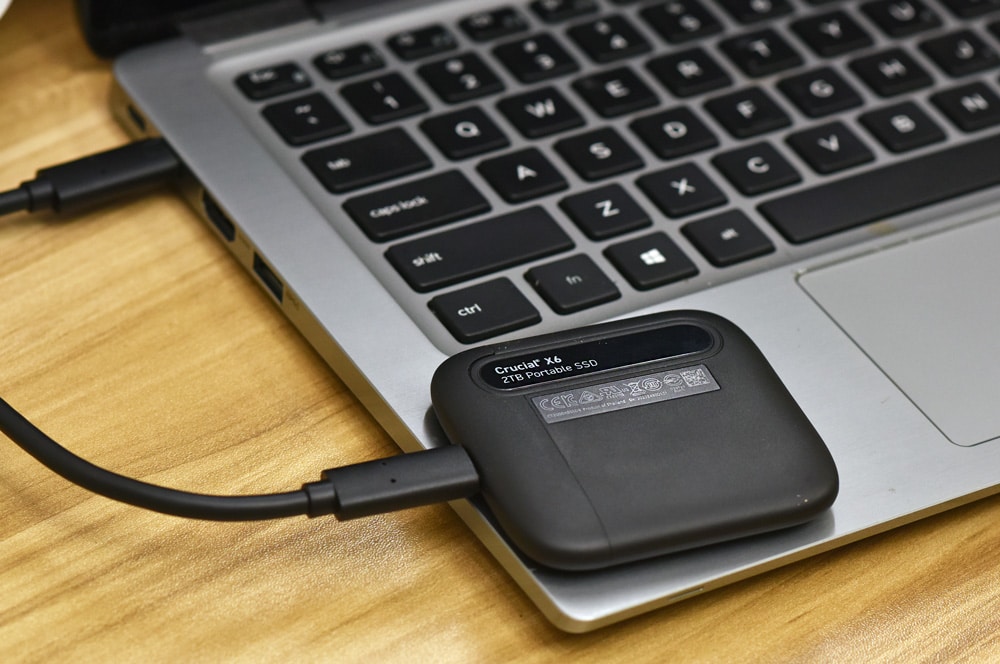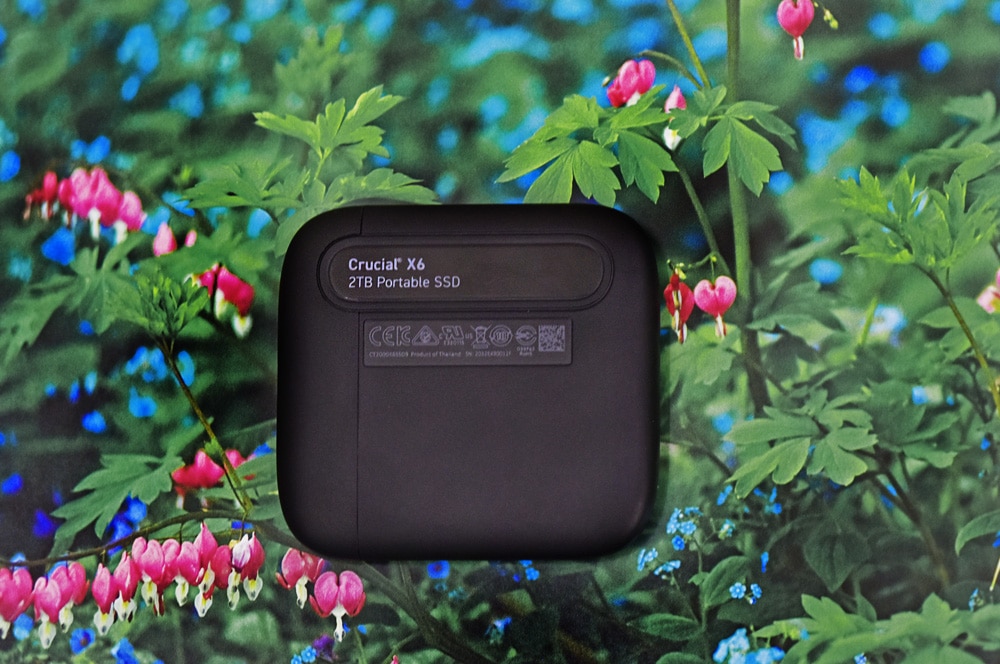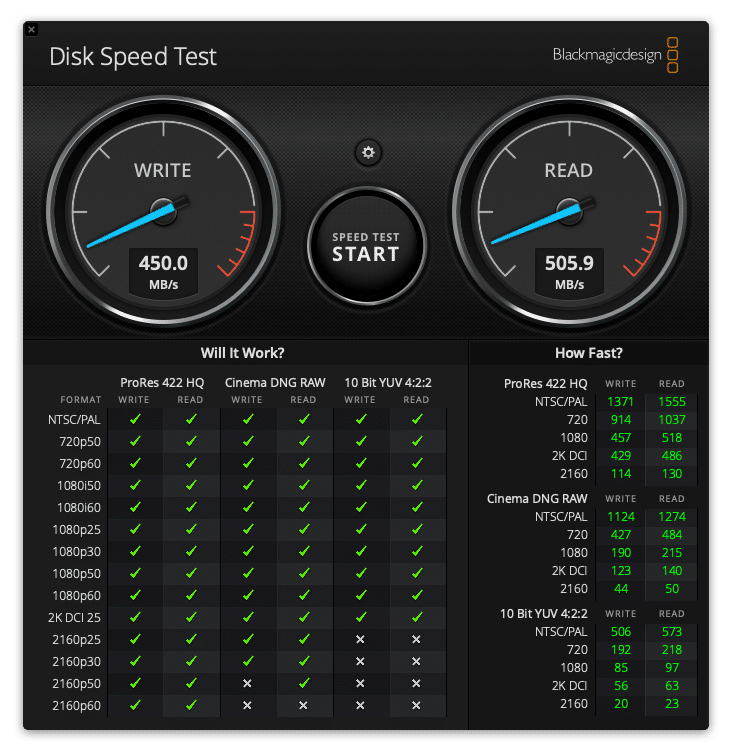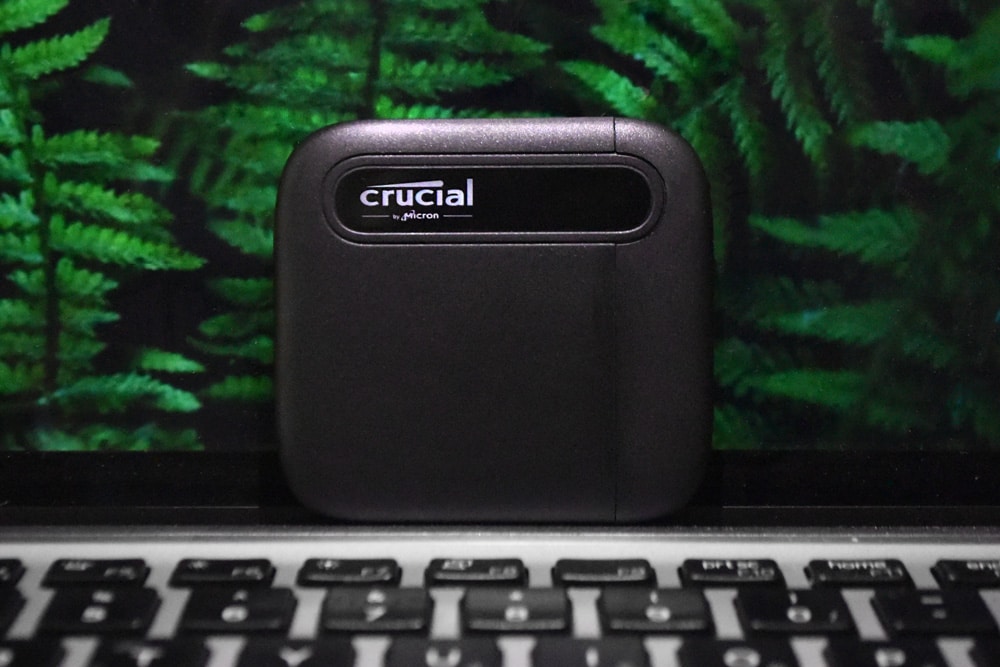The Crucial X6 is a compact portable SSD that uses Type-C connectivity and is an ideal solution for professionals or consumers who need access to their digital content on the go. Available in capacities 1TB and 2TB capacities, Crucial quotes the X6 with read speeds up to 540MB/s via the USB 3.1 Gen-2 interface. This is just the second portable SSD release by Micron, the first being the Crucial X8, the company’s more premium and expensive model.
The Crucial X6 is a compact portable SSD that uses Type-C connectivity and is an ideal solution for professionals or consumers who need access to their digital content on the go. Available in capacities 1TB and 2TB capacities, Crucial quotes the X6 with read speeds up to 540MB/s via the USB 3.1 Gen-2 interface. This is just the second portable SSD release by Micron, the first being the Crucial X8, the company’s more premium and expensive model.
 For data integrity, Crucial’s compact drive is drop-proof up to 6.5 feet and is resistant to shock, vibration, and extreme temperatures. The X6 is compatible with all of the recent USB-C technology, including Windows, Mac, iPad Pro, and Android devices. Those who need support with the PS4 or Xbox One (and other USB-A devices) will need to purchase a USB-C to USB-A adapter separately.
For data integrity, Crucial’s compact drive is drop-proof up to 6.5 feet and is resistant to shock, vibration, and extreme temperatures. The X6 is compatible with all of the recent USB-C technology, including Windows, Mac, iPad Pro, and Android devices. Those who need support with the PS4 or Xbox One (and other USB-A devices) will need to purchase a USB-C to USB-A adapter separately.

Backed by a 3-year warranty, the Crucial X6 goes for roughly $155 (1TB model) and $265 (2TB). We will be looking at the 2TB model for this review
Crucial X6 Specifications
| Interface | USB 3.1 Gen-2 interface |
| Capacities | 1TB, 2TB |
| Sequential read performance | 540MB/s |
| Dimensions |
|
| Support |
|
| Warranty | 3-years |
Crucial X6 Design and Build
Weighing in at just 42 grams, and measuring in at 6.9cm for width and 1.1cm for length, the X6 is certainly a tiny device. It features a plain, all-black design and can easily fit into larger pockets. The enclosure, which is branded by Crucial on a nameplate with a bezel, is as average-looking as it gets.
There’s not much else to the design except the USB-C port located on the right side.
Crucial X6 Performance
To gauge the performance of the Crucial X6, we tested it via BlackMagic on a gen-1 MacBook Air and IOMeter on a Lenovo ThinkCentre M90n Nano. We also compared it to the following recent USB 3.1 compatible drives:
In BlackMagic, the Crucial X6 recorded 505.9MB/s read and 450MB/s write, not quite reaching its quoted speeds. We also compared it to the X8 to show the difference within this Crucial family. Here, the X8 was able to hit 904.7 MB/s read and 802.0 MB/s write. We did not test the T5 with Blackmagic.
For IOMeter, we first looked at 2MB sequential with both 1 and 4 thread, the latter which is a higher load that pushes the drive a bit more. For 1 thread, the X6 reached 477.2MB/s read and 160.0MB/s write, while random performance hit 213.6MB/s read and 149.3MB/s write. For Random 4K, the portable Crucial SSD posted read speeds of 4,325 IOPS and writes speeds of 2,822 IOPS.
For the comparables, the Crucial X8 hit 784.24 MB/s read and 760.02 MB/s write, while 2MB random speeds saw 727.33 MB/s read and 752.36 MB/s write. In random 4K, the X8 hit 5,978 IOPS read and 8,435 IOPS write. We only tested the T5 with the 1-thread 2MB tests, which measured 426.62MB/s read and 406.39MB/s write in sequential and 404.32MB/s read and 400.26MB/s write in random.
Looking at a 4-thread workload, the X6 showed 539.8MB/s read and 350.4MB/s write in 2MB sequential test, while 2MB random posted 500.1MB/s read and 325.0MB/s write. In random 4K performance, the Crucial X6 recorded 15,071 IOPS read and 3,647 IOPS write.
In comparison, the X8 saw 997.99 MB/s read and 953.12 MB/s write for 2MB sequential performance, while 2MB random posted 997.99 MB/s read and 949.20 MB/s write. For random 4K, X8 speeds hit 39,643 IOPS and 44,518 IOPS respectively for read and write.
Conclusion
The Crucial X6 is a portable SSD that uses the USB 3.1 Gen2 interface, making it compatible with virtually all modern devices when coupled with a USB-C to USB-A adapter. With its compact, bus-powered design, the X6 is an extremely convenient drive and users will have no trouble fitting it in larger pockets. It is stated to be drop-proof up to 6.5 feet and is resistant to shock, vibration, and extreme temperatures. The X6 is available in capacities of 1TB and 2TB.
For testing, we used IOMeter and BlackMagic to determine its capabilities, the former which we tested in with both one thread and four threads. In BlackMagic, the Crucial X6 hit 505.9MB/s read and 450MB/s write, which was roughly 45MB/s less than the quoted read speeds. In one thread IOMeter, the X6 hit 477.2MB/s read and 160.0MB/s write for 2MB sequential, and 213.6MB/s read and 149.3MB/s write for 2MB random. In random 4K speeds, the X6 posted read speeds of 4,325 IOPS and writes speeds of 2,822 IOPS. For 4-thread performance, the X6 drive had 539.8MB/s read and 350.4MB/s write in 2MB sequential, and 500.1MB/s read and 325.0MB/s write in 2MB random. Looking at random 4K numbers, the Crucial X6 recorded 15,071 IOPS read and 3,647 IOPS write.
Overall, the Crucial X6 is a fine release from Micron, but there’s really nothing that sets the portable SSD apart from the vast amount of competition already out there. It features average transfer speeds (though it should satisfy those who need quick and easy offline access to their content on the go) and has a simple design that doesn’t stand out. Even its price tag, which costs $155 for the 1TB model and $265 for the 2TB, is average. That said, there’s nothing wrong with buying something that’s utilitarian, and the Crucial X6 certainly is that.
Engage with StorageReview
Newsletter | YouTube | Podcast iTunes/Spotify | Instagram | Twitter | Facebook | RSS Feed



